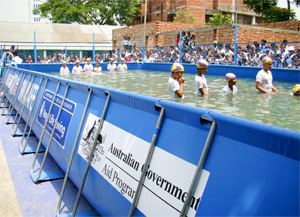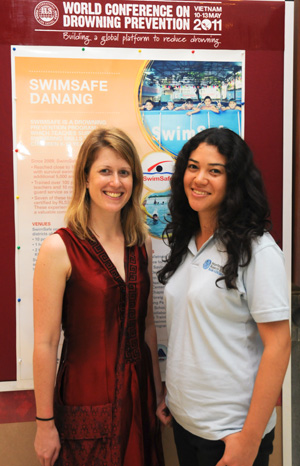Over 400 experts from 50 countries joined together last week at The World Conference on Drowning Prevention, held in Danang, Vietnam.
The conference focused world attention on the global burden of drowning and highlighted the epidemic of child drowning deaths in Asia and developing countries.
Ninety six per cent of drowning occurs in low and middle income countries–mostly in Asia and Africa–and often as a result of people undertaking everyday livelihood activities. Wells, irrigation channels, ponds and troughs are all sources of drowning risk.
Drowning is a significant obstacle of most of the Asia-Pacific countries in reducing child mortality, a key United Nations Millennium Development Goal.
In Asia alone an estimated 300,000 children drown each year–a rate some 20 times higher than in developed countries.
Research continues to show child drowning as a leading cause of death for children aged between one and four in many Asian countries.
The conference aimed to increase support for improved water safety and covered a wide range of drowning issues including, drowning research, child drowning interventions, emergency response, medical issues, advances in lifesaving, swimming, water safety, disasters and climate change.
Australians have been at the forefront of developing and refining skills and expertise in drowning reduction and have a number of effective water safety programs and strategies implemented to reduce the loss of life. It was proud to be a part of a conference that drew together world leaders in water safety research, policy and practice.
Reducing drowning through collaboration in the context of lifesaving, public health, international development, water safety education, lifesaving sport and aquatic disaster reduction is important; and Australians shared their experiences to help prevent a tragically common cause of death in countries less fortunate.
AusAID is encouraging efforts to increase awareness and collaboration on drowning prevention by working in partnership with local organisations to boost the capacity for effective strategies to reduce the loss of life.



